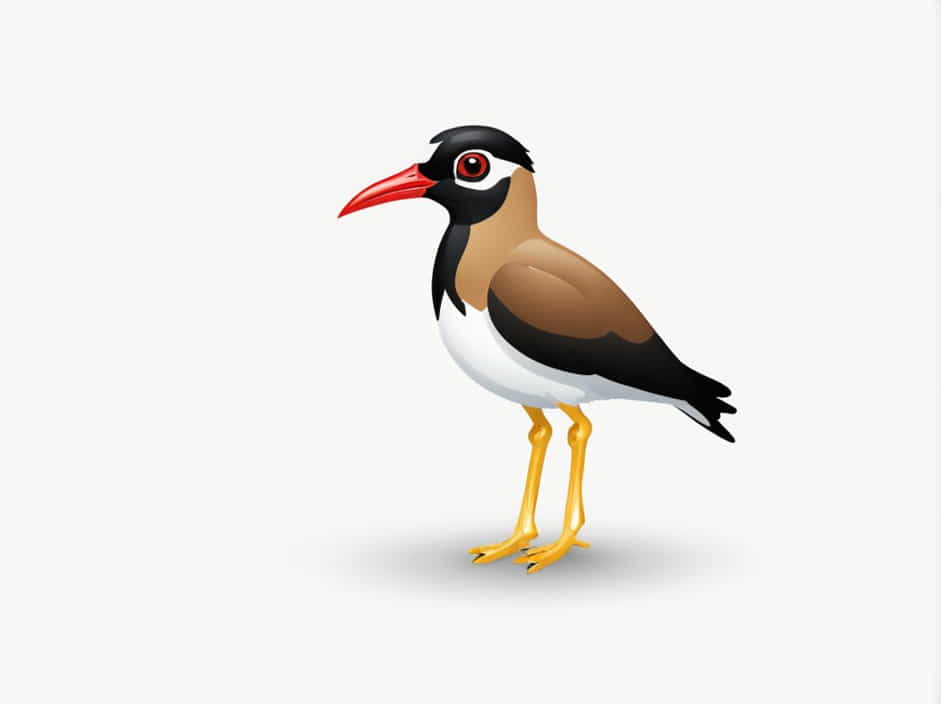The Red-Wattled Lapwing (Vanellus indicus) is a striking bird known for its loud calls, long legs, and distinctive red wattles. Found in South Asia and Southeast Asia, this bird thrives in a variety of habitats, from wetlands to open fields. One of the most interesting aspects of this species is its diet and feeding behavior.
In this topic, we’ll explore what the Red-Wattled Lapwing eats, how it finds food, and how its diet helps it survive in different environments.
Natural Diet of the Red-Wattled Lapwing
The Red-Wattled Lapwing is an insectivore and omnivore, meaning it eats both insects and plant materials. However, its diet mainly consists of small invertebrates found in the soil or water.
1. Insects and Small Invertebrates
The primary food source for the Red-Wattled Lapwing is insects and other small creatures, including:
- Beetles – A common food source found in grasslands and wetlands.
- Ants and Termites – Easily available in dry and open areas.
- Grasshoppers and Crickets – Provide essential proteins for energy.
- Worms and Caterpillars – Found in soft, moist soil and important for young lapwings.
- Spiders and Small Arachnids – A secondary but valuable food source.
2. Aquatic Creatures
Since Red-Wattled Lapwings often live near wetlands, rivers, and ponds, they also eat small aquatic creatures like:
- Small mollusks and snails
- Tiny crustaceans like freshwater shrimp
- Insect larvae found in shallow water
3. Seeds and Plant Matter
Although insects make up most of their diet, Red-Wattled Lapwings also consume small seeds and grains, especially when insect populations are low. These may include:
- Grass seeds
- Small grains from farmlands
- Wild plant matter like buds and soft leaves
How the Red-Wattled Lapwing Hunts for Food
The Red-Wattled Lapwing uses several feeding strategies to catch its prey effectively:
1. Ground Foraging
- The bird walks slowly across fields, grasslands, and muddy shores, using its sharp eyesight to detect movement.
- Once it spots prey, it quickly pecks at the ground to catch it.
2. Probing in the Soil
- The lapwing sometimes probes its beak into soft mud or soil to find worms and insect larvae.
- This method is especially useful after rain when the soil is damp.
3. Hunting Near Water
- When feeding near water bodies, the Red-Wattled Lapwing looks for small aquatic creatures along the edges of ponds and rivers.
- It may pluck insects and larvae from the water’s surface or grab tiny mollusks from wet soil.
4. Catching Flying Insects
- Occasionally, the lapwing may chase after flying insects, especially when food is scarce.
- It can make quick movements to snatch insects mid-air.
Seasonal Changes in Diet
The availability of food varies with the seasons, so the Red-Wattled Lapwing adapts its diet accordingly.
1. Breeding Season (Spring and Summer)
- During the breeding season, lapwings consume more protein-rich insects to support their energy needs.
- They also feed their chicks soft-bodied insects like caterpillars and worms.
2. Monsoon Season
- Rain increases the number of earthworms, termites, and insect larvae, making food abundant.
- Wet conditions also attract more aquatic prey.
3. Dry Season (Autumn and Winter)
- When insects become less available, lapwings eat more plant matter and seeds.
- They may forage in farmlands and open fields to find alternative food sources.
Where Do Red-Wattled Lapwings Find Food?
These birds are highly adaptable and can find food in various environments, including:
- Wetlands and Marshes – Ideal for finding aquatic insects, larvae, and small crustaceans.
- Grasslands and Open Fields – Perfect for catching beetles, ants, and grasshoppers.
- Agricultural Lands – Sometimes forage in farms, feeding on small grains and insects.
- Urban Parks and Gardens – May look for food in grassy areas or near water bodies.
How Does the Red-Wattled Lapwing’s Diet Benefit the Ecosystem?
As an insectivore, the Red-Wattled Lapwing plays an essential role in the ecosystem by:
✔ Controlling insect populations, helping farmers by reducing crop-damaging pests.
✔ Cleaning up dead insects and organic matter, preventing waste buildup.
✔ Acting as an indicator species, since their diet and behavior reflect environmental health.
The Red-Wattled Lapwing has a diverse diet consisting mainly of insects, small invertebrates, and occasional plant matter. Its sharp eyesight, quick reflexes, and adaptable feeding habits help it survive in different environments. Whether hunting in wetlands, grasslands, or farmlands, this bird plays an important role in maintaining ecological balance.
